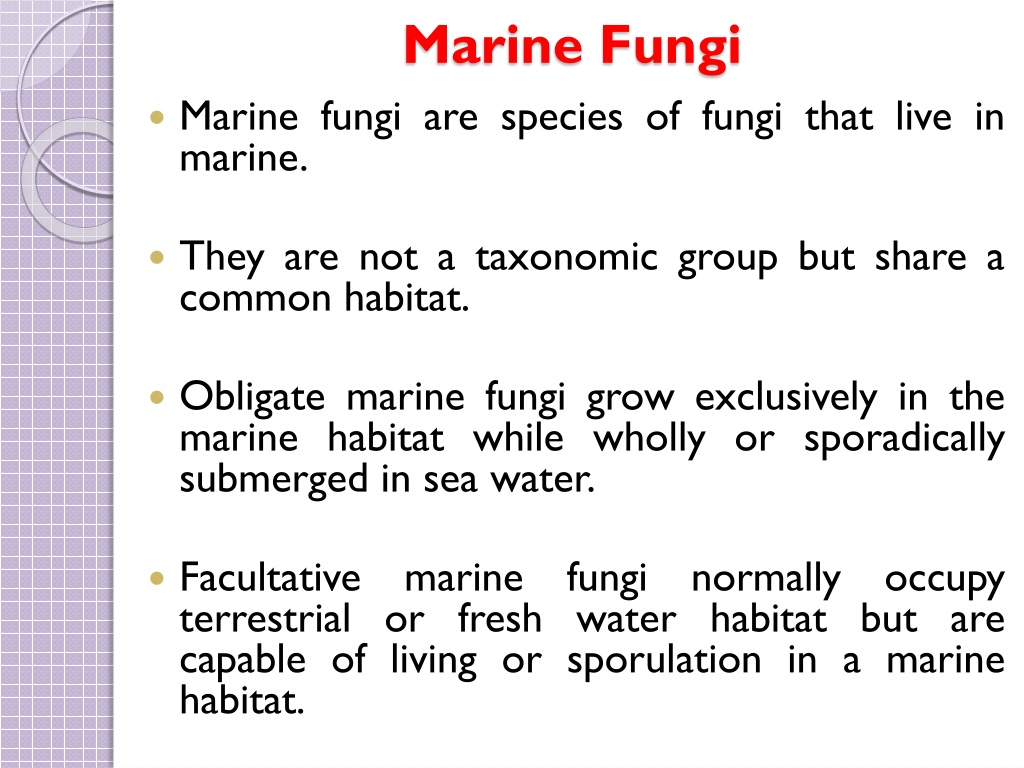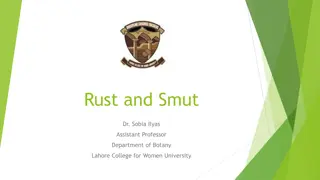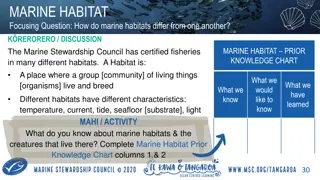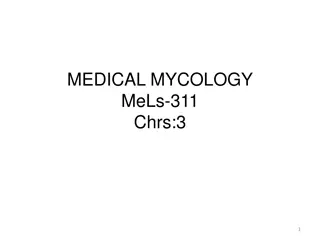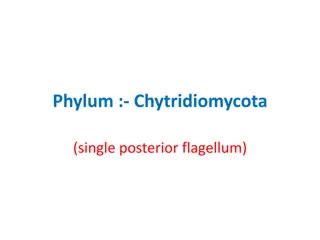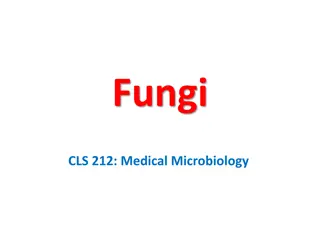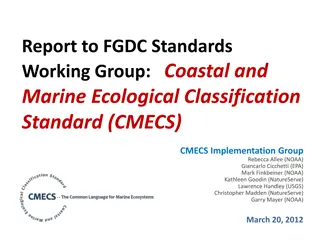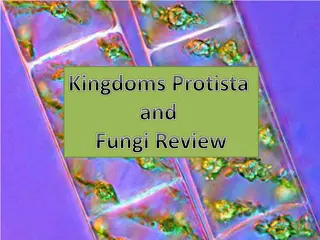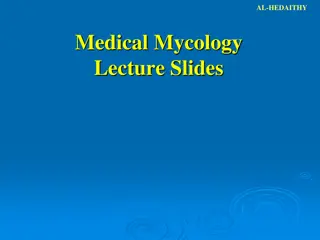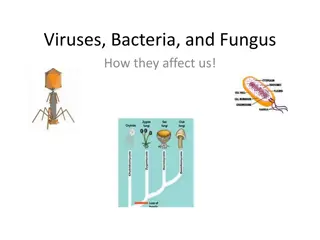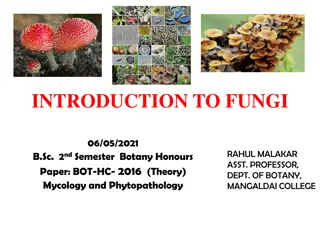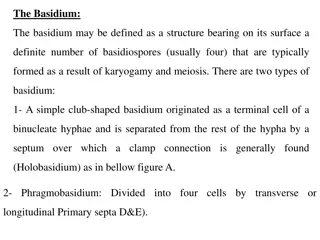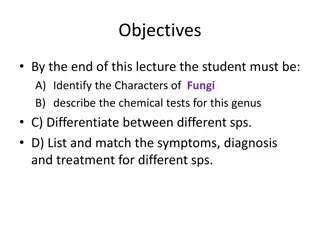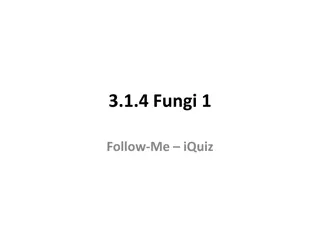Overview of Marine Fungi and Their Habitats
Marine fungi are diverse species that inhabit marine environments, with some being obligate marine fungi while others can adapt to various habitats. They play essential roles in marine ecosystems by decomposing organic matter and interacting with other organisms. Factors affecting their distribution include water temperature, salinity, water movement, and substrate availability. Various isolation techniques can be employed to study marine fungi.
Download Presentation

Please find below an Image/Link to download the presentation.
The content on the website is provided AS IS for your information and personal use only. It may not be sold, licensed, or shared on other websites without obtaining consent from the author. Download presentation by click this link. If you encounter any issues during the download, it is possible that the publisher has removed the file from their server.
E N D
Presentation Transcript
Marine Fungi Marine fungi are species of fungi that live in marine. They are not a taxonomic group but share a common habitat. Obligate marine fungi grow exclusively in the marine habitat while wholly or sporadically submerged in sea water. Facultative terrestrial or fresh water habitat but are capable of living or sporulation in a marine habitat. marine fungi normally occupy
Different marine habitats support very difficult fungal communities. Fungi can be found in niches ranging from ocean depths and mangrove swamps and estuaries with low salinity levels. coastal waters to Nutrition: Marine fungi can be saprobic or parasitic on animals, saprobic or parasitic on algae, saprobic on plants and saprobic on dead wood.
Factors influencing the location of marine fungi 1-WaterTemperature 2- Salinity 3-Water movement 4-The presence of: A- Suitable substrates for colonization. B- Interspecific competition. C- Pollution. 5-The oxygen content of the water.
Some marine fungi which have ventured into the sea from terrestrial habitats include species that: 1- Burrow into sand grains, living in the pores. 2- Other live inside stony corals and may become pathogenic if the coral is stressed by rising sea temperatures.
Types of Marine Fungi About 444 species of marine fungi have been described, including ten species of basidiomycetes, and 360 species of ascomycetes.
How fungi can be isolated Direct isolation techniques 1- Direct transfer The term "direct is applied to techniques involving transfer of a mould from its natural habitat to a pure culture situation in the laboratory. the simple
2- Moist chambers Direct isolation of fungi is often more effective if the natural substrate has been kept moist for one to several weeks to allow moulds to grow and sporulate. The easiest method involves a container called a moist chamber. Moist chambers can take any number of forms, but are basically containers holding a material such as cotton, paper, cloth, sterile sand or soil, or peat moss that can be kept moist for several weeks. The specimen is placed on top of the moist material and left until moulds begin to grow on it.
3- Direct plating Often it is most convenient to place materials that are of interest directly on a nutrient agar medium. It is a simple technique, requiring the placing of small bits of the substance on the surface of the agar or the pouring of melted but cooled agar over the fragments. After a few days' incubation mould colonies appear on the surface, and can be transferred into pure culture.
4- Dilution plating In this technique 1 gram (dry weight) of the material to be studied is ground up (if necessary) and dispersed in 9 ml of sterile water. After a few days' incubation, colonies will appear in varying densities, depending upon the amount of dilution from the original material.
Baits: Many moulds have quite specific nutrient requirements and are specialized to use materials that other fungi use with difficulty or not at all. We can take advantage of this for the isolation of fungi by presenting a particular substance to the colonization and then later recovering it for isolation of the fungi that occupied it. environment for
Other kinds of baits might be pieces of wood, insects, carrot hair ..etc. chunks, plastics, The bait can be submerged in a particular habitat in nature or in a moist chamber. The most commonly baited habitat is water, both fresh and marine. Again, almost anything can serve as a bait and the water can be either naturally occurring or in a Petri dish.
Good results can be obtained by putting some pond water in a Petri dish and floating on it a few sesame seeds that have been heated until they have popped. Within three or four days the seeds will be covered with oomycetes zoospores. Dead files, pollen, bits of apple or carrot, cellophane and other materials are also productive baits. producing
